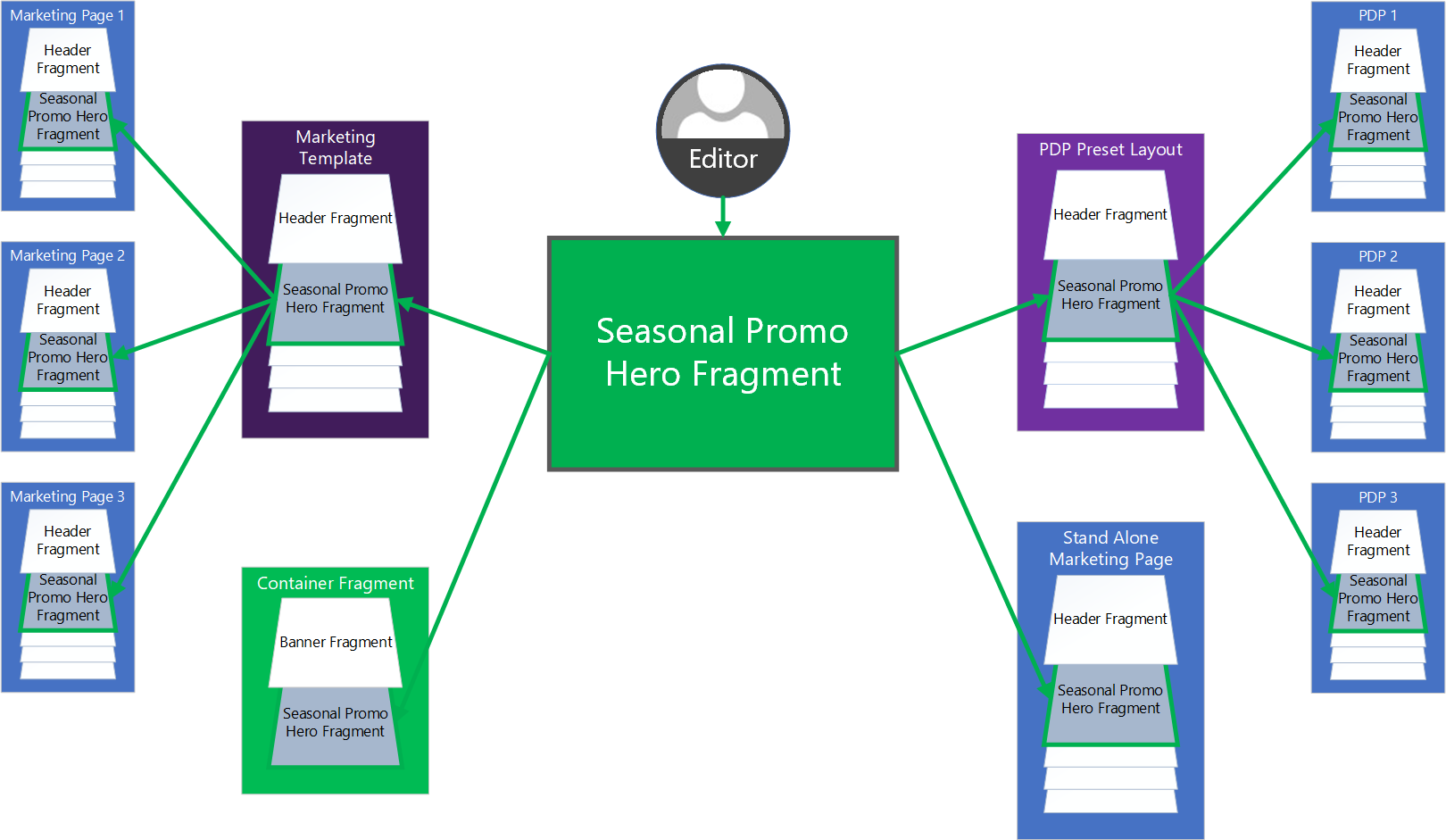Fragments
The purpose of the fragments element is to eliminate redundant content creation by centralizing module configurations that are reused across your site. They allow for efficient content updates because editing a single fragment can immediately update thousands of pages that reference it.
Fragments are fully configured modules.
Any type of module can be converted into a fragment. Fragments can be independently created, updated, referenced, and deleted. They have a full life cycle across the CMS, and they are shareable across many pages. Typical examples of fragments are the header and footer fragments.
You can place a fragment into a template or into a page layout. Anywhere that you can place a module, you can replace it with a fragment, and this fragment can contain the localized content.
Watch the following video for a demonstration of how to build a fragment.
